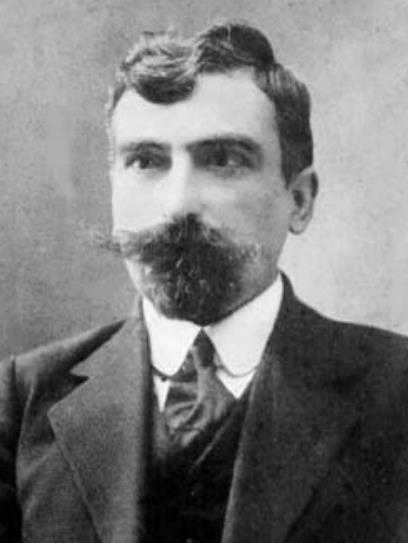Artyok Ovker En Part II
July 5, 2012by Aram Hovasapyan
For those of you just tuning in, I wanted to take the opportunity this internship has presented me to share with you the stories of the monumental figures that were responsible for the creation and shaping of the first Armenian Republic. I figured that most readers are inclined to know, at least a little, about the military men, but not as much about the political figures that played such critical roles. One man of great importance was Aram Manukian.
Aram Manukian was an active member of the ARF early on and participated in the defense of Kars and Gandzak in 1903. He gained fame for his valiant leadership during the Siege of Van. The Armenian resistance at Van from April 19-May 24, 1915 represented the first successful resistance to provocative Ottoman policies and massacres that began the Armenian Genocide. The systematic deportation of Zeituntsis earlier on in the beginning of April 1915 was met with an unsuccessful resistance. Hence, this is the red flag in the Young Turk government’s argument that claimed that it was the events at Van that gave them the justification to implement “anti-Armenian policies”. Anyway, back to Aram Manukian. Manukian was able to successfully organize a defense of the Armenian quarter of Van against the forces of Jevdet Bey, brother in law to Enver Pasha, until Russian and Armenian volunteer units relieved the siege.
Due to his brave and successful efforts in Van, Aram Manukian was appointed as governor of Free Vaspurakan, which would later lead to the formation of the Administration of Western Armenia. He would be the longest serving governor of the Administration, serving from June 1916 to December 1917.
However, I think his most important and lasting contribution came during his leadership in Yerevan in 1918. When the battles that would determine the very existence of an Armenian state were unfolding (Sardarapat, Karakilisa, and Bash Aparan), the entire Armenian political leadership presided from Tiflis. This was the city where the Dashnaktsutyun had been founded and the Armenian National Council, the body that would declare Armenia’s independence, resided. Tiflis was the metropolitan and gubernatorial center of the Caucasus with a strong Armenian presence; in fact, twenty-seven out of twenty-nine prewar mayors had been Armenian. Compared to Tiflis, Yerevan was nothing more than a sleepy agricultural town. To add to that, when the Russians acquired Yerevan from the Persians in 1828, the city had a Muslim majority. In all regards, Tiflis was the Armenian center. The Armenian National Council declared Armenia an independent Republic from Tiflis, at the time the capital of the Republic of Georgia that had been created a few days earlier. Furthermore, the first government did not take the reins of power in Yerevan, the new Armenian capital, until July of 1918, almost two months after Armenia’s declaration of independence. Essentially, when the majority of Armenian leaders were having difficulties leaving the city that Armenians had built and presided over to the Georgians, Aram Manukian was taking care of a large refugee population in Yerevan during a time of war and famine.
Having been proclaimed “popular dictator” in Yerevan, Manukian, along with Drastamat Kanayan ((Dro), you see this name come up a lot, so please read about him as well), was instrumental in organizing the defenses around Yerevan in May of 1918, and keeping law and order. In the difficult circumstances, he did employ strict and harsh measures, but his great honesty and discipline caused people to obey, trust, and respect him. It would not be an overstatement to say that without his leadership, the formation of the first republic would be questionable.
When the first cabinet of the Republic was formed, Manukian served as the minister of internal affairs. In the agonizing months, Manukian worked to feed a starving population and keep in check the looting of the Mauserists. (These were Armenian volunteers who had become bandits in the desperate times and were referred to as Mauserists due to the Mauser C96 pistols they carried.) In fact, many believed that Manukian held the greatest political sway and prestige even after the new government arrived in Yerevan. A great tragedy for the Republic occurred on January 29 of 1919, when Manukian fell victim to the raging typhoid epidemic and died. He had been attending to the sick population and contracted the disease. Manukian left a lasting legacy and prestige, especially to the office of interior affairs. Alexander Khatisian, the former mayor of Tiflis who succeeded Manukian as minister of internal affairs, had great shoes to fill. He would soon after leap into the premiership and become the Republic’s second prime minister.
Tune in again next week for the continuation of the saga of historic Armenian figures.
